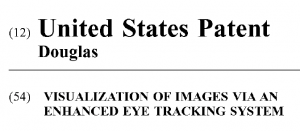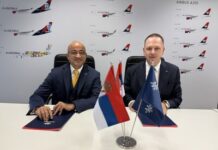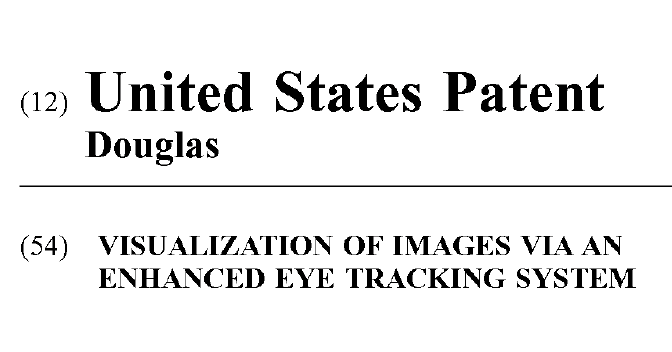
To enhance surveillance by performing localized image enhancement at a GPS coordinate corresponding to a Soldier’s convergence point
To enhance surveillance by performing localized image enhancement at a GPS coordinate corresponding to a Soldier’s convergence point
ORLANDO, FL, USA, July 25, 2023/EINPresswire.com/ — In a 17 July 2023 press release, TPMI discussed its ‘538 patented technology to aid the Soldier in performing a “comprehensive search pattern”. TPMI’s advanced tech platform tracks the pointing direction of the left eye, tracks the pointing direction of the right eye, determines the convergence point in the scene, the corresponding GPS coordinate of this spot and generates a novel dataset.
Each time stamp in the ‘538 patented dataset stores the Soldier’s vantage point (i.e., GPS coordinate of the Soldier), where the Soldier is looking (e.g., the GPS coordinate of the Soldier’s convergence point), and what the Soldier is seeing (e.g., a vehicle at the GPS coordinate where the Soldier is looking). By recording the GPS coordinates of convergence points, TPMI’s dataset enables an extremely enhanced surveillance system not only for the Soldier, but also for the intelligence community.
So, imagine you are a Soldier hiking along high ground on a reconnaissance mission. Over the past one kilometer, you have been intermittently looking down on a valley for the enemy. Your upgraded IVAS system displays a series of white dots to indicate a set of ground GPS locations you have seen and a series of orange dots to indicate a set of ground GPS locations that your fellow Soldiers have seen. Because of the ‘538 technology, you and your squad have instant knowledge of the surveillance gaps and can look in un-surveyed areas to achieve a comprehensive search.
However, even if you are looking in the right area, the target can be difficult to spot. Every bird watcher knows this. Every infantryman knows this. So, tracking GPS coordinates of each convergence point fixation is useful, but it does not guarantee detection.
In US 11,709,546, TPMI has developed a major technological breakthrough — to increase probability of detection. Once integrated into the IVAS, the portions of the displayed image corresponding to a Soldier’s convergence point can be enhanced to maximize detection within the Soldier’s visual sweet spot. Consider the following scenario.
Soldier #1 on the high ground sees a dark object in the valley’s shadow and has a prolonged convergence point fixation trying to make out what looks like a bush. The ‘546 patent enables edge enhancement selectively (i.e., in the vicinity of the convergence point) enabling the Soldier #1 to make out the edges of a structure thereby improving not just identification, but also characterization of the dark object. Soldier #1 is able to see one straight edge and determines that it could be a possible vehicle, so the GPS location at his convergence point is flagged.
Using technology in the ‘538 patent and ‘546 patent in combination, the GPS location of Soldier #1’s prolonged convergence point fixation on the possible vehicle is passed to other Soldiers in the squad. Soldier #2’s IVAS automatically performs an image enhancement in the vicinity of the GPS location including edge enhancement and localized dynamic range adjustment. Soldier #2, who is at a different viewing angle than Soldier #1, is able to see several straight edges. Multiple IVAS systems acquiring imagery from multiple viewing angles can yield via sensor fusion accurate characterization of the vehicle as a Russian BTR-50 armored personnel carrier. Without tying convergence points to GPS coordinates, performing localized image enhancements for all Soldiers at the GPS coordinate of concern, the armored personnel carrier could easily have gone undetected.
TPMI has a breathtaking platform of technology which, if integrated into an upgraded IVAS, would result in a superior system. TPMI aims to work with PEO Soldier to integrate this novel technology into the IVAS.
About the author: Dr. Robert Douglas is a West Point graduate who: fought as an Infantryman in Vietnam with US units and a Vietnam recon company; worked in a combat development agency; studied nuclear war in the Joint Chiefs of Staff; patrolled in the desert for the UN in the Middle East with Russian war planners; and developed a system to assist Air Force space exercises. After leaving the service he spent over three decades in the defense industry rising from manager to vice president working programs ranging from sensors and missiles for Air Force aircraft to rubbing shoulders with Army scientists; to Army helicopters and combat vehicles as well as rapid target acquisition (RTA), night vision goggles and helmets sights.
Dr. Robert Douglas
TPMI, LLC
email us here
![]()



































